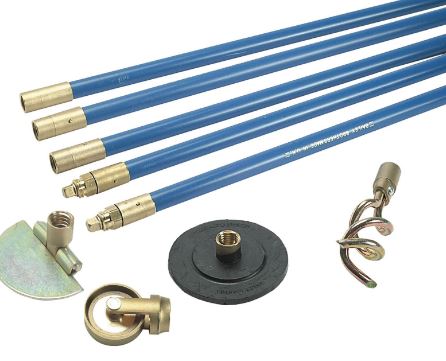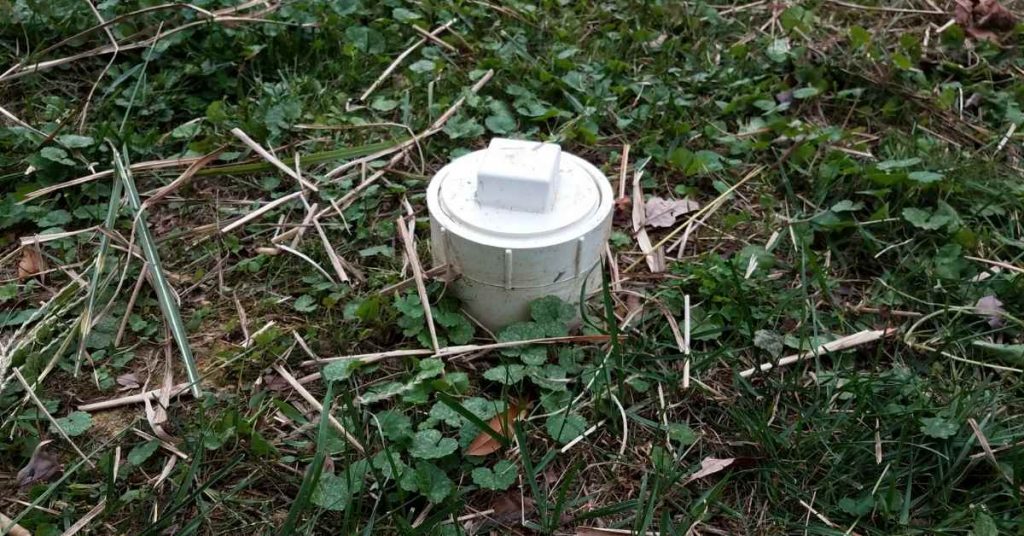
Sewer rodding is a process used to clear sewer and drain pipes of obstructions, such as tree roots, grease buildup, debris, or foreign objects that impede proper wastewater flow.
The rodding equipment typically consists of a series of interconnected rods that can be extended into the sewer line. These rods can vary in length and flexibility, depending on the severity and location of the blockage.
When Do You Need Sewer Rodding? You may need sewer rodding in the following situations:
- Persistent Drain or Sewer Clogs: If you have recurring clogs in your drains or sewage backup issues that are not resolved by basic plunging or chemical drain cleaners, sewer rodding may be necessary to reach and remove the obstruction.
- Slow Drains: If you notice slow drainage in multiple fixtures throughout your home, it could indicate a clog or blockage in the main sewer line. Sewer rodding can help address this issue.
- Tree Root Intrusions: Over time, tree roots can infiltrate sewer pipes, causing blockages and damage. Sewer rodding can be used to break up or remove these invasive roots from the pipes.
- Foreign Objects: If objects or debris have accidentally entered the sewer line, sewer rodding can be used to retrieve or dislodge them.
- Sewage Odors or Backups: Foul odors or sewage backups in your home may indicate a serious blockage or damage in the sewer line, necessitating sewer rodding to diagnose and resolve the issue.
- Routine Maintenance: Periodic sewer rodding as part of a maintenance plan can help prevent major blockages and extend the life of your plumbing system.
How Sewer Rodding Works
Sewer rodding today is not what it used to be in the past. That is why sewer rodding is a different concept for different people depending on how who ask.
In the past (although the practice is still in use today), sewer rodding involved the use of several rods of flexible cables (and hence the name sewer rodding). The first rod would be connected to the head attachment and pushed down the drain pipe.

The top of the rod would be threaded to allow another rod to be screwed straight on top of it. You therefore keep adding more rods until you hit the clog.
To rod your sewer line using this tool, it is important for you to spin the rods in a clockwise direction. Spinning the rods in a counterclockwise direction could unscrew the rods meaning you will lose some rods and the head attachment inside the sewer line.
In that case, you would need to dig out the sewer line to recover the lost tool. Needles to say, that is a very expensive undertaking.
When you think you have cleared the clog, the sewer rods are pulled out, the head attachment is removed and a plunger is attached. The rods are then connected again and the plunger is used used to push the broken down clog out of the sewer line.
In modern plumbing, professional plumbers use power rodding to clear blockages from sewer lines. So, what is power rodding?
Power rodding is a high-tech, more advanced and effective method compared to the one above. It uses a thin highly flexible cable connected to a head attachment with sharp teeth, perfectly sized in accordance with the diameter of the sewer line.
On the surface, instead of the cable and head attachment being pushed manually, they are connected to an electric motor. As the cable rotates, it spins the cable and head attachment which not only breaks down the clog but also scrapes the sewer line walls leaving it fully opened.
Apart from the ordinary clogs caused by toilet paper, hair, soap and grease, power rodding can also be used to remove tree roots from the sewer line.
Rodding should be left to professional plumbers but there is nothing preventing you from doing it yourself. You can either hire a power rodding machine or you can buy a simpler/manual sewer rod.
A manual sewer rod is basically a thin flexible wire with a head attachment wound on a drum. Unlike in the old system, you don’t need to keep connecting smaller rods to each other.
You get the complete sewer rod and head attachment in one piece. Most of these cables are usually 100 feet long.
How to Rod out a Sewer Line
If you decide to rod out the sewer line yourself, the first step will be to locate your sewer cleanout. A sewer cleanout is a piece of pipe with cap (cap usually has a square nut on top) that allows you access to the sewer line.
Sewer cleanouts could be located inside the house or outside the house. Inside the house, you are likely to locate it in the basement but outside the house it will be very close to the house sticking a few inches from the ground.

Check out this post on how to locate a sewer cleanout.
If you do not have a sewer cleanout, you can rod the sewer line from the plumbing vent at the roof of the house or from the toilet drain. You will however need to remove the toilet first.
Once you have located the sewer cleanout, slowly remove the cap knowing that there could be water trapped in the sewer line. Let the pressure bleed out first before completely removing the cap.
Start pushing the sewer rod down the sewer line. Just remember that the sewer rod will move around bends/elbows but with a little resistance.
You will know when you have hit the clog since you will encounter solid resistance. To break down the clog, pull and push the sewer rod repeatedly.
With this manual sewer rod, spinning the cable is not an option. The only way is to hammer the clog until it breaks loose.
Needless to say, this type of rodding is an as effective as power rodding. It will however break most clogs in the sewer line.
One advantage of sewer rodding is that it will let you know if there are serious problems in your sewer line. If for instance the rodding cannot clear the clog, it is a sign of a bigger problem inside the sewer line.
Perhaps that is the reason I recommend leaving sewer line cleaning to the professionals. A professional plumber will most likely advise you to let them inspect the sewer line with a camera first.
Sewer line inspection gives a good report of the health of the sewer line and it also lets the plumber know which tool to use to clean or unclog it.
Sewer Rodding vs Drain Snaking

Draining snaking is the process of clearing a clogged drain using a plumber’s snake. A drain snake consists of a long cable with a head attachment and a cranking handle.
How a drain snake works is that you simply push the cable down the drain until you encounter resistance (the clog). You then lock the cable and start cranking the handle until you push the cable head past the clog.
After that, you would then release more cable just to be sure that there are no more clogs. When you have cleared the clog you pull out the cable as you wind it on the drum.
Drain snaking is not as effective as power rodding. The sharp teeth in a power rodding machine will cut through the clog and tree roots while drain snakes will hardly remove tree roots from a sewer line.
Unless you know how to use it, a drain snake can also damage your drain pipes. That is why I would recommend rodding over snaking.
Sewer Rodding Vs Hydro Jetting
Perhaps the best sewer line cleaning process to compare with power rodding is hydro jetting. So, what is hydro jetting?
Hydro jetting is a process where pressurized water (of up to 4500 psi) is used to break down clogs from sewer lines as well as dissolve sludge and scrape off pipe scale leaving the pipe as good as new.
In hydro jetting, a high-pressure hose connected to a special nozzle are then connected to a pump that pressurizes the water producing a powerful jet that obliterates the clog, small tree roots and sludge/grease.
Before hydro jetting the sewer line, a plumber will first inspect the sewer line using a camera and then decide whether to hydro jet it or power rod it. The inspection also allows the plumber see if the sewer line can handle hydro jetting.
Sewer Rodding vs Chemical Drain Cleaners
Given how expensive it is to hire a plumber to clean a sewer line, some homeowners prefer using chemical drain cleaners to clean their sewer lines.
Should you however do it? Are chemical drain cleaners better that sewer rodding or even hydro jetting?
I do not recommend the use of chemical drain cleaners to clean sewer lines, for the simple fact that chemical drain cleaners don’t always work, they are very bad for you plumbing and your health.
The heat produced by chemical drain cleaners can soften PVC pipes, weaken steel pipes or even melt the glues used to join pipes together. For more information on why not to use chemical drain cleaners check out this post.






